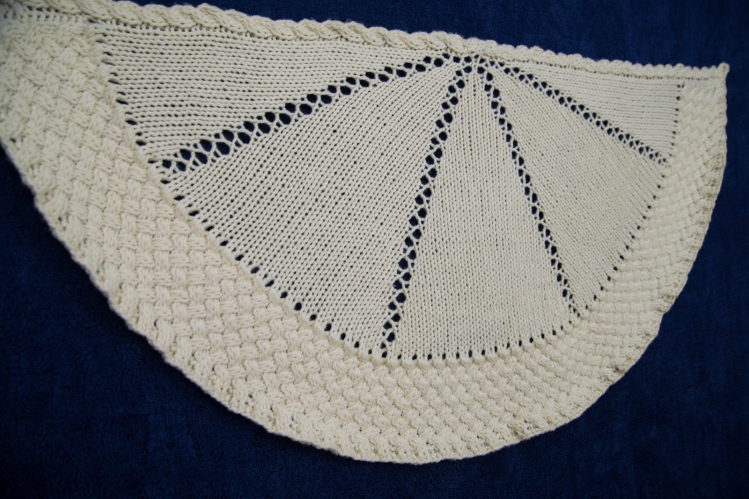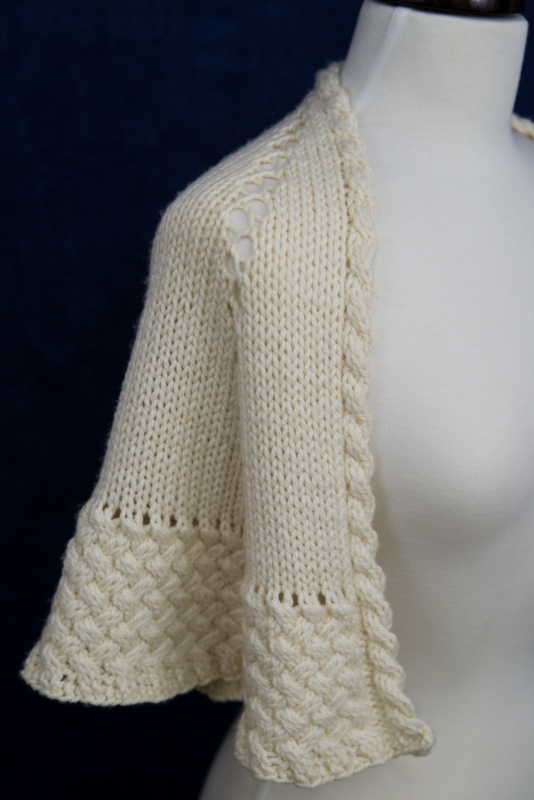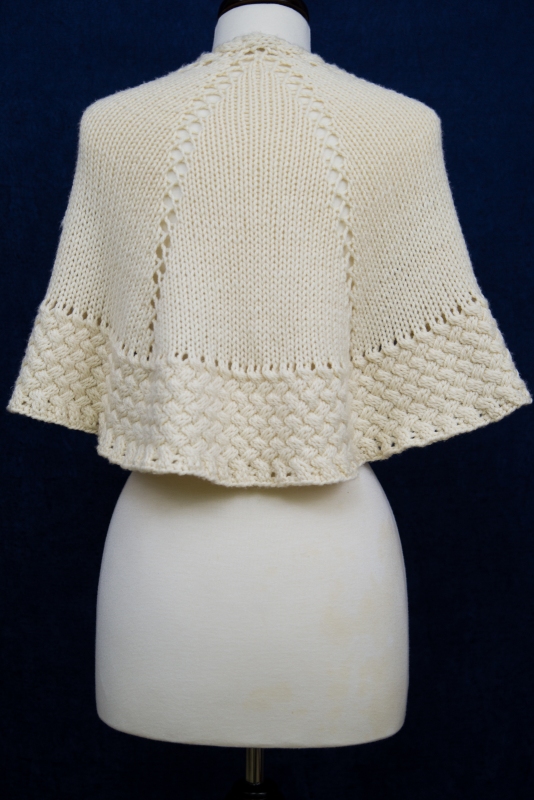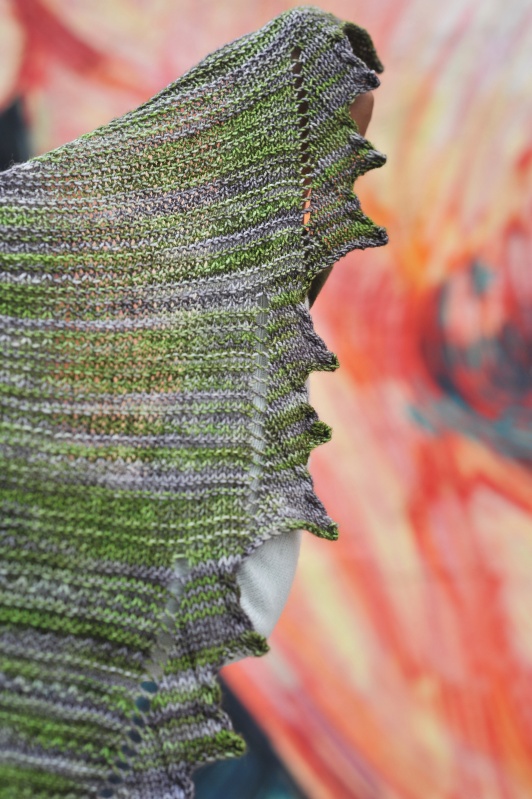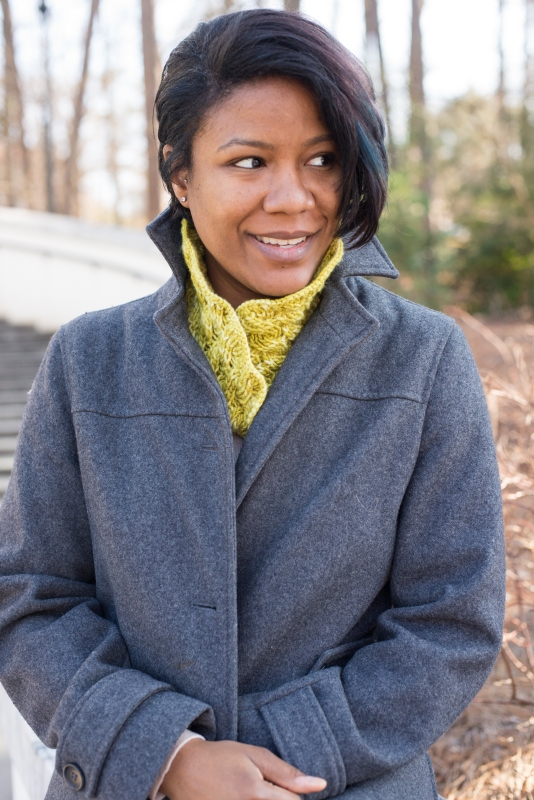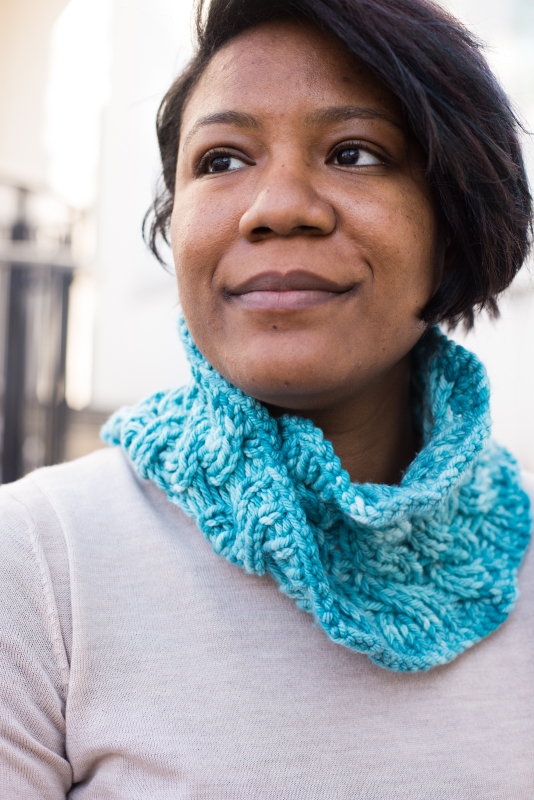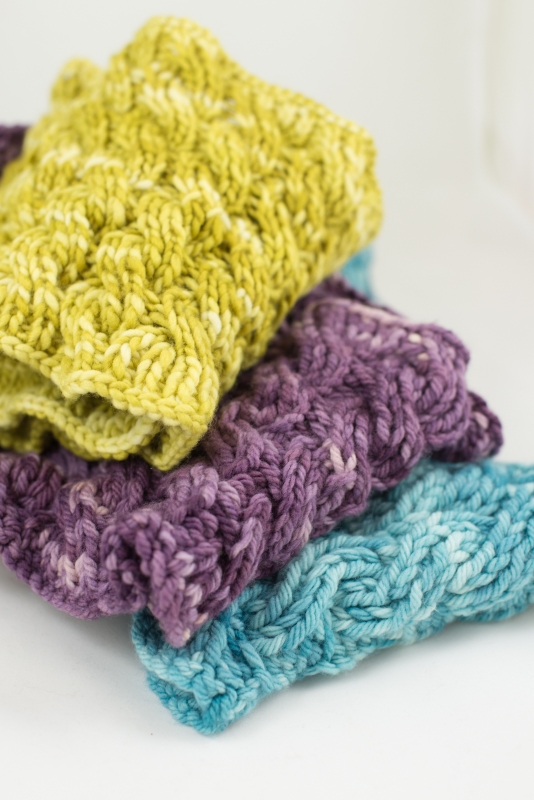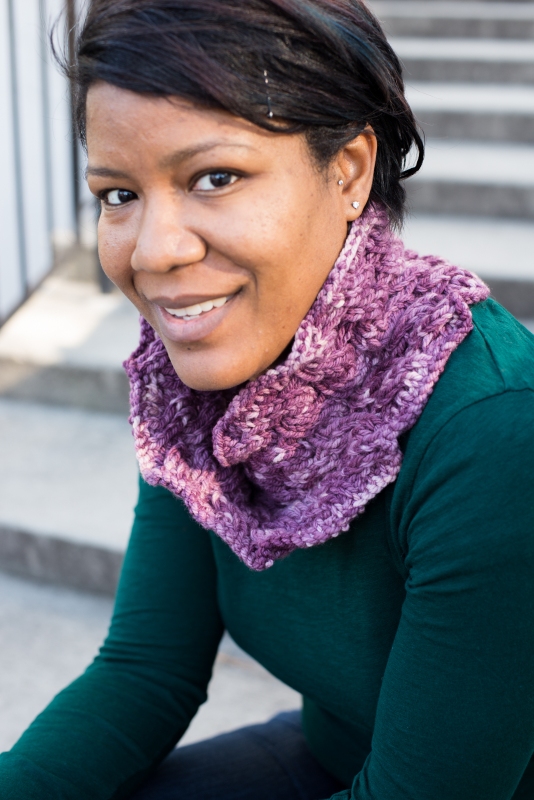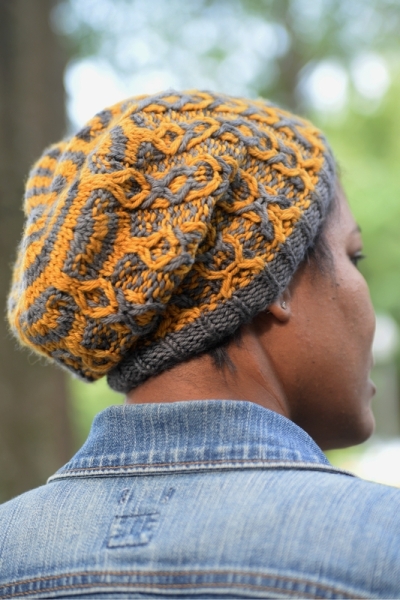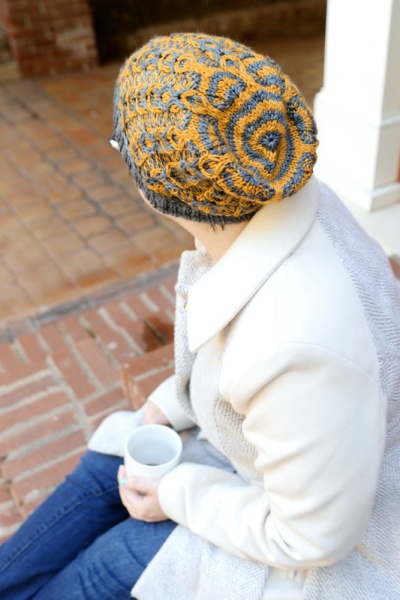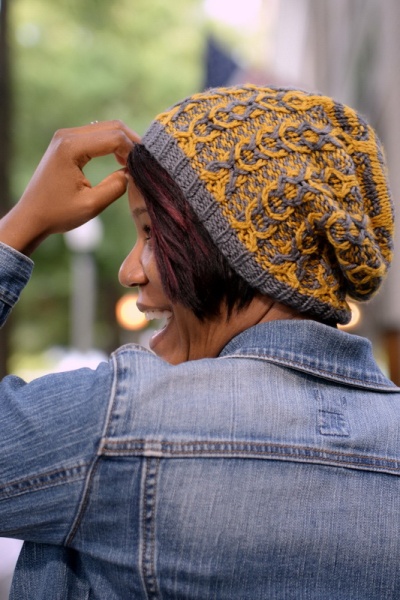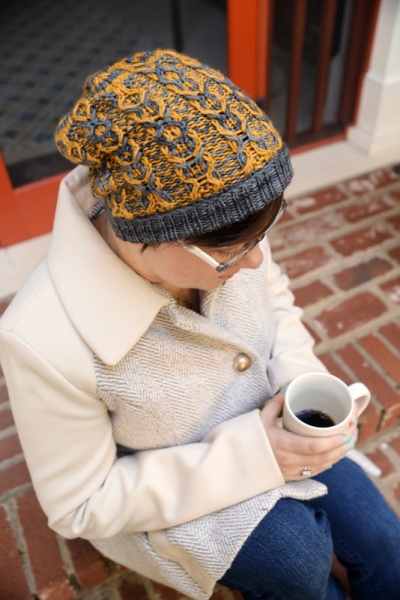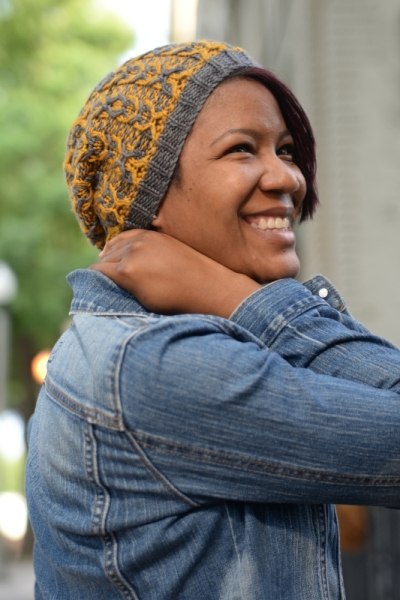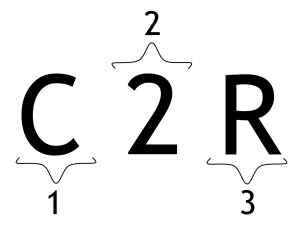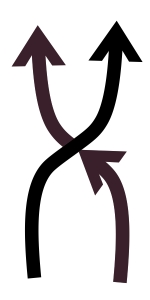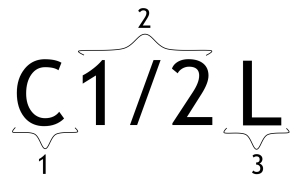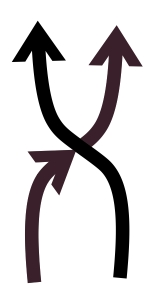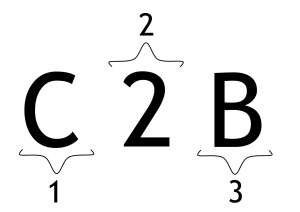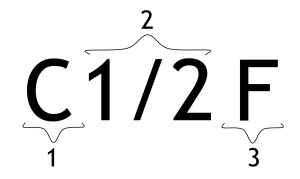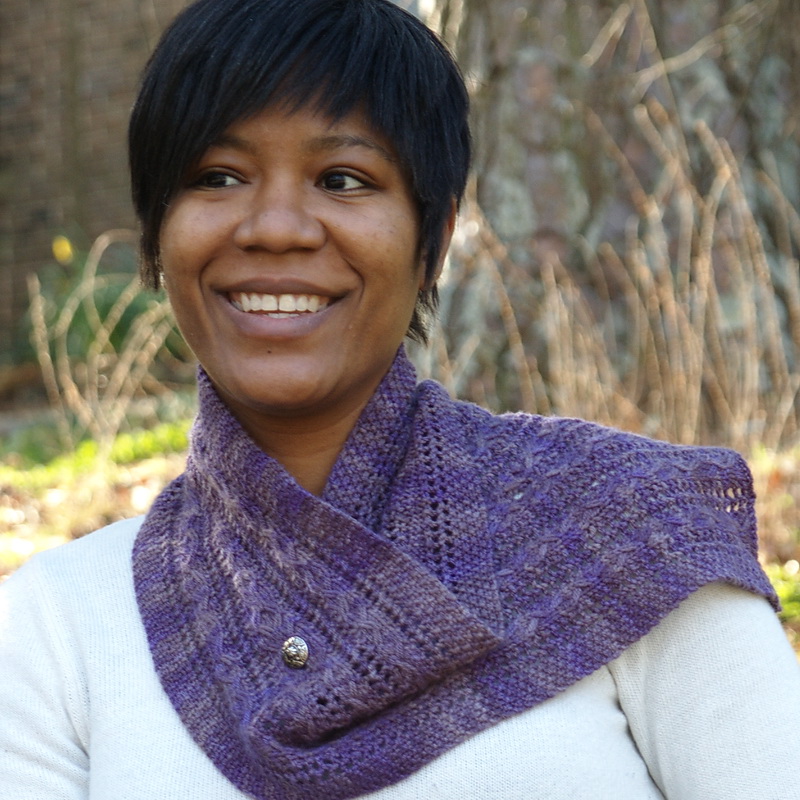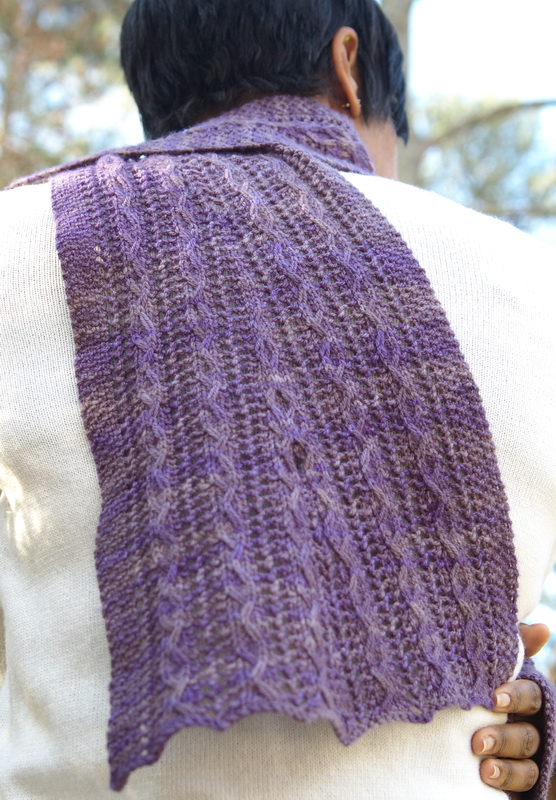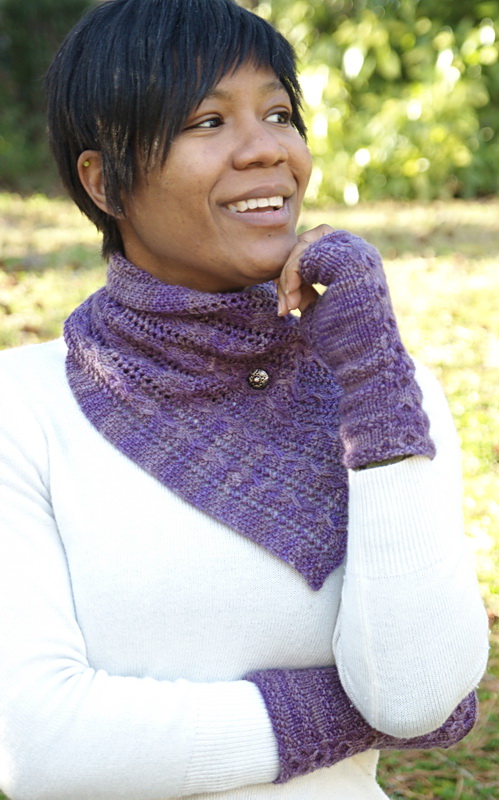Let’s talk about fingerless mitts. I am a huge fan of fingerless mitts, the one pair that I have made for myself is probably my most worn knitted item. They are imminently practical and are usually fun, quick knits. You can easily get a pair out of most any single skeins of yarn or partial balls you have left laying around.
Easy and fun, but there are things about some of the available patterns that I do not care for – and please know that these are just my personal preferences and not meant to cast aspersions on the design choices of anyone else.
1) I love the look of “reflected” mitts. Where there is a distinct left and rightness to the hands. Unfortunately this usually means that you have two sets of instructions for the two mitts – which makes the knitting process less fun and easy. Then, once they are made you have to make sure you get the right one on the right hand.
2) Picking up the thumb. While I do not care for the “hole to stick your thumb out of” method of creating thumbs (vastly preferring a gusset) I also do not like transferring the thumb stitches to waste yarn, picking up the stitches later and then knitting the 4 – 5 rows of both thumbs creating thusly four new ends to weave in.
3) One size fits all – but mostly all women who have relatively small hands.
So, obviously when I set out to make a pair of mitts to match …and Curiouser, I had an agenda.
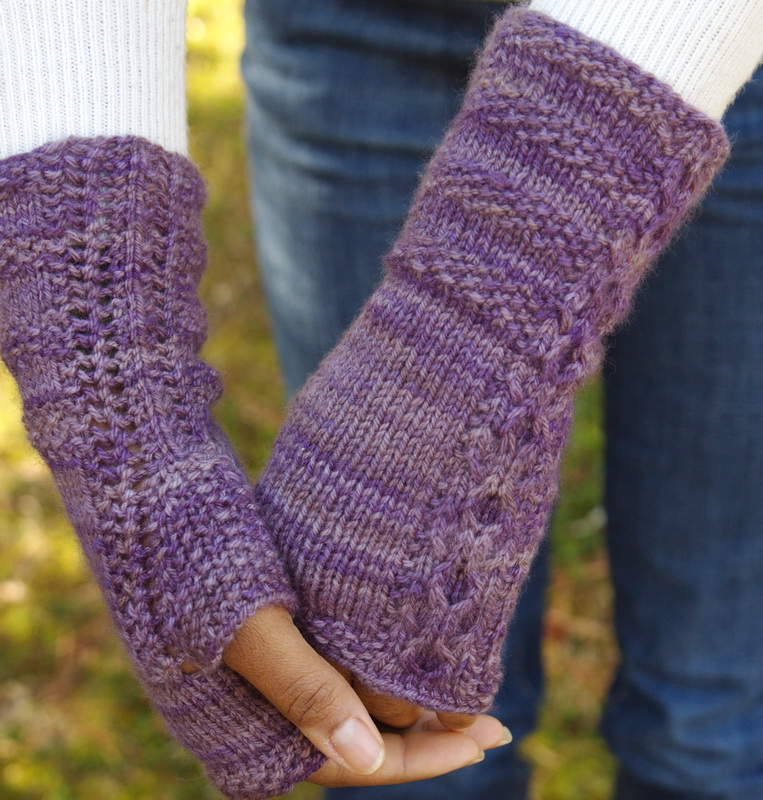
Curiouser Mitts – one skein of Finito
I used a gusset, but worked it up to the point where it covered enough of the thumb to get away with simply binding off – it does not provide full thumb coverage, but you can always transfer to waste yarn and add your own thumbs if that is what floats your boat.
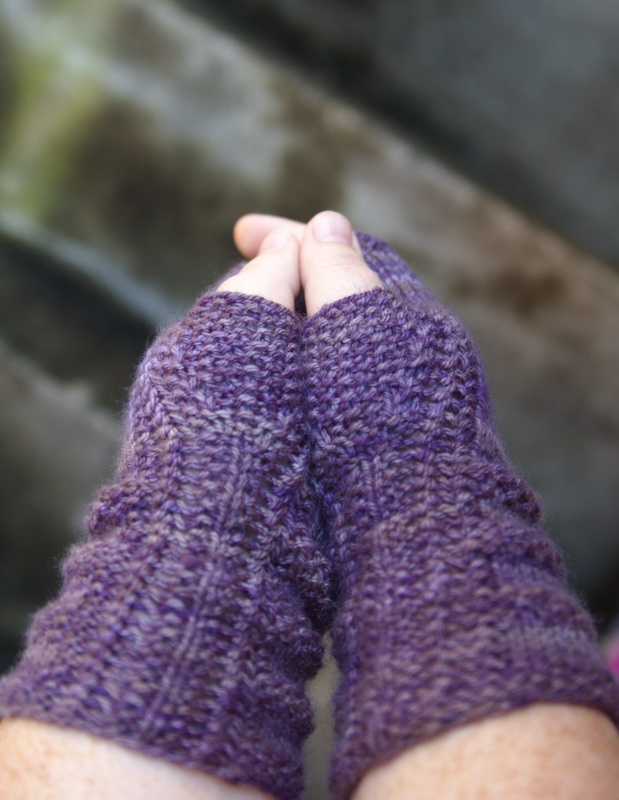
See the thumbs? No extra ends to weave in!
The pattern as written is designed for a medium hand with instructions to make it smaller for the petite and larger for, well, the larger. 😉 I like a little positive ease in my mitts – so these fit me perfectly. My husband has long thin hands and they fit him also.
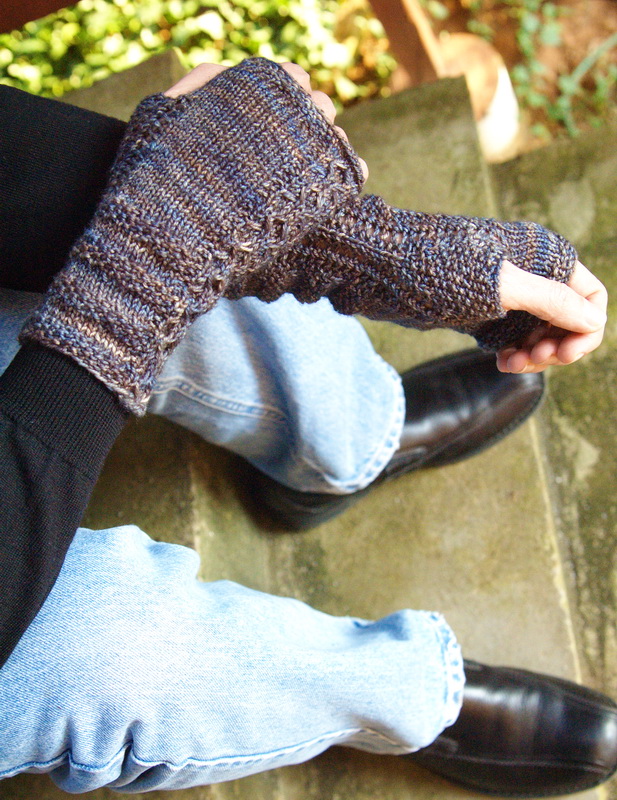
Somehow these are pretty darn unisex
For the reflected patterning – I TOTALLY CHEATED. If you look carefully you will see I lifted the lace, cable and seed stitch patterning out of the shawl to make the pieces match, but it is the positioning of the elements that is the cheating. The cable is situated directly opposite of the thumb gusset with a stockinette/seed stitch gap separating the two. When you put the mitts on you instinctively scootch the thumb around so it is offset towards your palm. This rotates the cable around to the pinky edge of the back of your hand providing the illusion of reflected patterning without any reversing of the shaping or fiddling with the position of the thumb.
And, when you put them on it doesn’t matter which hand they go on. In my wacky brain I think of them as ambihandrous.
As with …and Curiouser the original mitts were made with one skein of Malabrigo Finito worked at a fairly loose gauge. With these mitts it makes a big difference on the softness, but it also creates a situation where if you use a tightly spun sock weight yarn you will end up with a rather holey looking fabric. Now, if you have small hands you can simply go down needle sizes until you are happy – you will simply have smaller mitts. But if you are looking to keep the size (or even size up a bit) it will be better to substitute a Sport weight yarn.
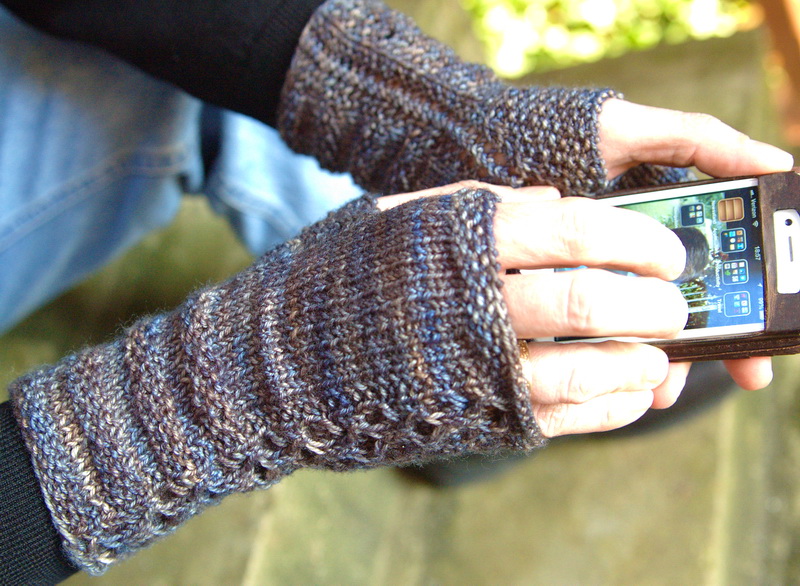
Working on the Iphone, a perfect application for fingerless mitts
The mitts pictured that I made for my husband had just such a substitution. I had a partial skein of Prostetnic Vogon Jeltz Bugga! left over from another project and I used that at the same gauge. It worked beautifully. Unfortunately the colorway has been retired – but if you really like these, the lovely dyer of Cephalapod Yarns has been known to resurrect colorways if she receives enough requests.
So – are you going to make a pair for the man in your life or for yourself? (I am aware that there is a distinct possibility that the man in your life is yourself – rock on guy knitters!)

